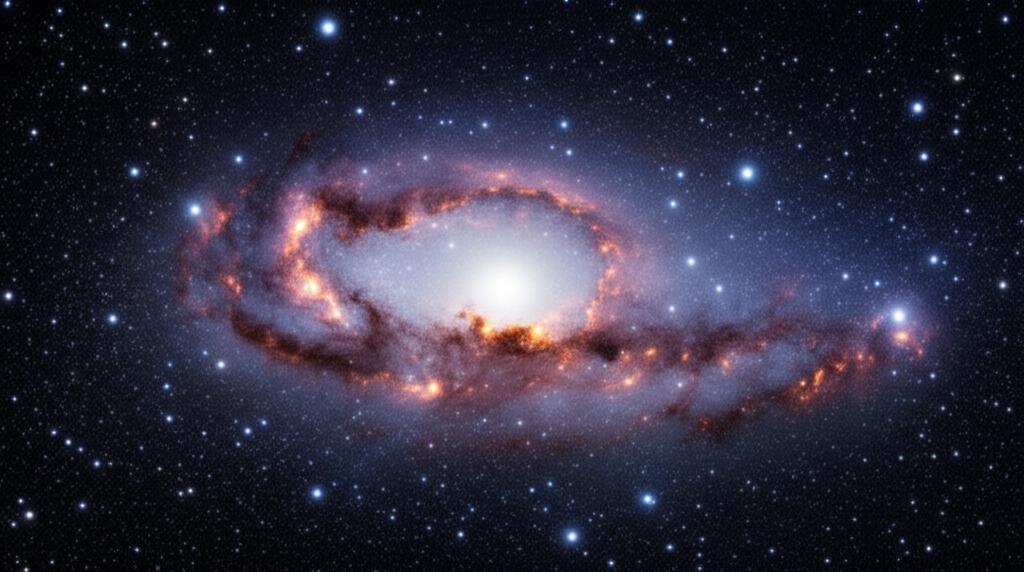The crimson plains and dusky skies of Mars, a world that has long captivated human imagination, hold an ethereal secret: auroras. Unlike the familiar, dazzling lights that dance around Earth's poles, Martian auroras are a more subtle and diverse phenomenon, offering scientists a unique window into the Red Planet's thin atmosphere and its intricate dance with the solar wind. Understanding these ghostly glows is not just an academic pursuit; it provides crucial insights into planetary atmospheric dynamics, a key piece of the puzzle as humanity prepares for future crewed missions.
Mars, unlike Earth, lacks a global magnetic field to shield it from the constant onslaught of charged particles from the Sun. This fundamental difference dictates the nature and variety of its auroras. Instead of concentrated ovals at the poles, Martian auroras can occur in various forms and locations, driven by a complex interplay of remnant localized crustal magnetic fields, the solar wind, and the composition of the Martian upper atmosphere.
A Spectrum of Martian Light ShowsScientists have identified several distinct types of auroras on Mars, each telling a different story about the planet's atmospheric processes:
- Discrete Auroras: These auroras are perhaps the most similar to Earth's, though they are far fainter and typically observed in ultraviolet light. They occur near areas of the Martian crust that still possess localized magnetic fields, particularly in the southern hemisphere. These "magnetic anomalies" act like mini-magnetospheres, funneling solar wind particles into the atmosphere, causing it to glow. The occurrence of these discrete auroras is strongly influenced by the orientation of the solar wind's magnetic field in relation to these crustal fields.
- Diffuse Auroras: Sprawling and faint, diffuse auroras can cover large portions of the planet. They are typically triggered by intense solar events, such as solar energetic particle (SEP) events, where the Sun ejects a massive burst of highly energetic particles. These particles can penetrate deep into the Martian atmosphere, causing widespread, though often dim, glows across the entire night sky.
- Proton Auroras: Observed primarily on Mars' dayside, proton auroras are a unique spectacle. They form when protons in the solar wind interact with the extended hydrogen corona (the outermost part of Mars' atmosphere). During this interaction, the solar wind protons can steal electrons from Martian hydrogen atoms, becoming energized neutral atoms. These energetic atoms are no longer deflected by magnetic fields and can thus penetrate the upper atmosphere, causing it to glow. Recent observations by missions like the UAE's Emirates Mars Mission (EMM) have revealed these proton auroras can be surprisingly dynamic and patchy, indicating a more chaotic interaction between the solar wind and the Martian atmosphere than previously thought.
- Sinuous Discrete Auroras: A more recently identified type, these "worm-like" auroras can stretch for vast distances, sometimes halfway across the planet. Observed by the Hope orbiter, these large-scale phenomena highlight the dynamic and sometimes unanticipated ways solar activity interacts with Mars' patchy magnetic environment.
For years, Martian auroras were primarily studied using ultraviolet instruments on orbiting spacecraft like NASA's MAVEN (Mars Atmosphere and Volatile EvolutioN) and ESA's Mars Express. However, a historic breakthrough occurred in March 2024 when NASA's Perseverance rover captured the first-ever images of a visible-light aurora from the Martian surface.
During a significant solar storm, Perseverance's Mastcam-Z camera and SuperCam spectrometer detected a faint, green glow across the night sky. This emission, at a wavelength of 557.7 nanometers, is the same signature green light produced by excited oxygen atoms in Earth's auroras. This landmark observation confirmed that future astronauts on Mars might witness these ethereal displays with their own eyes, though they would likely appear as a dim, diffuse green hue. The event was a triumph of multi-mission coordination, with MAVEN and Mars Express confirming the presence of solar energetic particles coinciding with Perseverance's surface observations.
Unveiling Atmospheric DynamicsThe study of Martian auroras is far more than just appreciating a celestial light show. These phenomena are powerful diagnostic tools for understanding the Red Planet's atmospheric dynamics and its ongoing evolution:
- Solar Wind Interaction: Auroras directly trace the pathways of energetic particles from the Sun as they penetrate the Martian atmosphere. This helps scientists map out how the solar wind interacts with a planet that lacks a global magnetic shield, providing insights into atmospheric erosion processes that have stripped Mars of much of its ancient, thicker atmosphere.
- Atmospheric Composition and Structure: The colors and altitudes of auroral emissions reveal information about the composition and density of the upper atmosphere. For example, the green glow observed by Perseverance confirms the presence and excitation of oxygen at specific altitudes.
- Energy Deposition: Auroras are a visible manifestation of energy being deposited into the Martian atmosphere by solar particles. Understanding this energy transfer is crucial for comprehending the thermal balance and circulation patterns of the upper atmosphere.
- Magnetic Field Mapping: Discrete auroras act like signposts, highlighting regions where remnant crustal magnetic fields are strong enough to channel charged particles. Studying their locations and intensity helps refine maps of Mars' ancient magnetic field.
- Space Weather Impacts: Observing how auroras respond to solar storms and other space weather events allows scientists to better predict and understand the potential impacts of such events on the Martian environment, which is vital for the safety of future human missions and robotic explorers.
The ongoing exploration of Martian auroras, fueled by advanced orbiters and rovers, continues to unveil the complex and dynamic nature of the Red Planet's atmosphere. Each new observation, each newly identified type of aurora, adds another piece to our understanding of how Mars has evolved and how it interacts with the harsh space environment. As we push the boundaries of planetary science, these faint, ghostly lights serve as luminous guides, illuminating the secrets of Mars' atmospheric past, present, and future.

